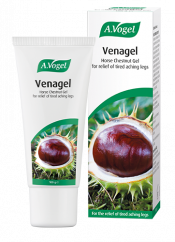What is a spider vein?

Spider veins usually manifest in clusters, extending in thin blue-green lines across the skin, like the branches of a spider’s web.
Spider veins are capillaries, not the main veins themselves which are much bigger and thicker-walled. Capillaries are only big enough for one red blood cell to pass along. They are also thin-walled to allow oxygen to diffuse out and wastes to absorb back in. This is why they break so easily and spider veins become apparent.
Spider veins can become visible as a result of weakened valves or as a symptom of a larger circulatory problem. They can also occur as a result of constant friction. Normally they manifest on the legs or the face and they are very common to experience during pregnancy or in old age and are sometimes confused with varicose veins. Spider veins can also arise as a result of friction.
How do you get spider veins?

There a number of factors to consider when it comes to developing spider veins. Often they can appear alongside a circulatory problem such as varicose veins but sometimes they also manifest for no apparent reason. Unfortunately your genetics may play a role in predisposing you to spider veins, however there are a few other factors that can also influence your chances of getting spider veins.
Pregnancy
When you are pregnant, your uterus naturally grows and expands to accommodate the growing foetus. You will also experience great hormonal changes during this period and your body will also start to produce more blood to help sustain the life growing inside you. These factors can all contribute towards the development of spider veins as they can all influence the strength of your vein walls and have an impact on how your valves pump blood throughout your body
Birth control pills
An unusual cause but one that may explain when you are developing spider veins earlier on in life. Most birth control pills influence your hormones, including oestrogen and progesterone, which can then affect the strength of your vein walls, either making them weaker or inhibiting your valves from pumping blood as efficiently
Menopause
Similarly to pregnancy and birth control, the menopause can wreak havoc with your hormones, causing them to fluctuate dramatically before gradually declining. This can then have a knock-on effect on your veins as low levels of oestrogen or progesterone can weaken the vein walls
Obesity
If you are overweight it can place an enormous amount of stress on your body. Your valves, which are already having to fight against gravity, may struggle to pump blood properly around your body and if your diet is rich in caffeine, refined sugars and alcohol, it can make you more vulnerable to inflammation
Sedentary lifestyle
If you don’t do exercise enough or spend too much time simply standing on your feet without moving around it can affect your circulation, again putting you at risk of developing spider veins. If you are too sedentary it can also make you vulnerable to obesity, another stressor which can have a huge impact on your circulatory health
Old age
As you age you are definitely more likely to develop spider veins as your vein walls will become weaker. It’s also possible that you may not be moving around as much as you used to, which again can have a knock-on effect on your circulation.
What is the difference between spider veins and varicose veins?

Spider veins and varicose veins often get bunched together in conversation and it’s easy to see why. Spider veins often appear alongside varicose veins and the two do share some of the same causes and symptoms.
However it’s important to remember that while spider veins may appear with varicose veins, they are not the same as varicose veins and do have some crucial differences. Below I have outlined the main similarities and differences of varicose veins and spider veins to help you recognise their differentiating factors.
| Similarities | Differences |
| Both varicose veins and spider veins can develop due to an existing issue with your circulation or blood flow | Your circulatory health can influence your chances of developing spider veins but this is not always a fixed cause and spider veins can emerge for other reasons |
| Both cause your veins to swell abnormally and can affect your confidence and self-image | The appearance of spider veins is not as pronounced as that of varicose veins. Spider veins are finer, smaller and they do not bulge to the same extent. |
| Both varicose veins and spider veins can cause itchiness and irritation | Varicose veins can be quite painful and uncomfortable whereas spider veins are not known to trigger a painful reaction |
Are spider veins dangerous?
The short answer is no. On their own spider veins are considered to be more of a cosmetic issue than a medical problem.
However it is easy to confuse spider veins with something more sinister, particularly since they do often manifest alongside more serious medical conditions such as varicose veins or skin ulcers. In these instances though, spider veins are merely a symptom of a greater underlying problem, not the root cause.
How are spider veins treated?

Spider veins can be treated in a number of ways, with some even opting for surgery as a means of getting rid of the problem. In these instances, laser surgery and sclerotherapy are very popular, with sclerotherapy involving an injection directly into the vein using a specialised fluid to collapse the blood vessel.
These procedures are not for everyone, though, which leaves many wondering what natural solutions there are. Fortunately, the answer is quite a lot! There are plenty of natural ways of preventing spider veins and reducing their appearance, although admittedly a lot of these solutions rely on you being willing to make a few small lifestyle changes:
Get active
Keeping active is vital, especially if you know that you are already genetically predisposed to developing spider veins. A healthy amount of exercise each day should help to keep the blood pumping around your body, improving your circulation and keeping your valves in good working order. A little exercise can help to prevent you from becoming overweight and should definitely be on your agenda if you have a sedentary job that has you sitting or standing for prolonged periods of time!
Care about your food
Even your diet can play an important role in managing spider veins. If your diet is rich in refined sugars, caffeine and alcohol then you may be triggering a release of inflammatory chemicals within your body, not to mention you could be risking becoming overweight. Instead you should be trying to support your circulatory system with plenty of antioxidant fruit and veg, focusing particularly on foods that are high in vitamin C. Certain spices such as turmeric and cayenne pepper are known to be good for your circulation, so definitely try to include them whenever possible
Elevate your legs
Too much time spent standing or sitting can make you vulnerable to spider veins so try to make a point of elevating your legs above your heart at least a couple of times a day. Gravity should help the blood to flow properly, preventing your veins from becoming dilated or enlarged
Try Horse chestnut seeds
I would highly recommend that you try our Venaforce® herbal remedy. I normally recommend this for varicose veins but it can also be used to support other circulatory problems which may be useful if you think that is the root cause of your spider veins. What makes this remedy so effective is its content of horse chestnut seeds, with all extracts containing freshly harvested seeds. Its active ingredient, Aescin, is wonderful for reducing inflammation and improving blood flow, even going so far as to target the activity of the enzymes responsible for breaking down the vein wall. It’s suitable for most adults over the age of 18, however if you are pregnant or breastfeeding, then we also have our horse chestnut seed gel, Venagel, which is very soothing and cooling for heavy, aching legs.
Venagel - Horse chestnut gel for tired, aching legs

- Relieves tired, heavy legs
- Can be used during pregnancy
- Made from fresh Horse chestnut seeds
- No pesticides, insecticides, fungicides or chemical fertilizers used
"This is another product I used whenever needed and which is excellent."








